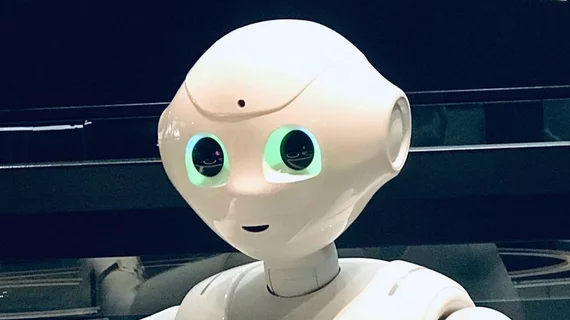Microrobots guided by an MRI eradicate liver cancer
A Canadian radiologist and his research team have developed a treatment for liver tumors that utilizes microscopic robots, guided to eradicate their target by an MRI machine. The tiny robots are made of magnetizable iron oxide nanoparticles, and when injected into the bloodstream they can theoretically provide treatment anywhere in the body.
While the idea isn’t new, the practical use of nanobots has been limited due to gravity—they’re heavy, and it’s difficult for the necessary magnetic force to guide them accurately. Even an MRI machine’s powerful magnetic field isn’t typically sufficient to propel the robots accurately, because the magnetic gradient used for precision navigation is a fraction of what the scanner is capable of.
“To solve this problem, we developed an algorithm that determines the position that the patient’s body should be in for a clinical MRI to take advantage of gravity and combine it with the magnetic navigation force,” radiologist Gilles Soulez, MD, from the CHUM Research Centre and supervisor for the microbot research, said in a statement.
“This combined effect makes it easier for the microrobots to travel to the arterial branches which feed the tumor,” he added. “By varying the direction of the magnetic field, we can accurately guide them to sites to be treated and thus preserve the healthy cells.”
The proof of concept study that outlines the full technique was published in the journal Science Robotics. [1] Soulez stated that it has been successful enough to consider this could one day change the way interventional radiologists treat liver cancers, especially since it’s less-invasive and damaging to the body than traditional chemotherapy, as robots are more precise in their cellular eradication.
“Our magnetic resonance navigation approach can be done using an implantable catheter like those used in chemotherapy,” he said. “The other advantage is that the tumors are better visualized on MRI than on X-rays.”
So far the MRI-guided microbot treatment has only been used in pigs. However, there is no reason to think the fundamental idea of making a “particle train” out of robots, and navigating them as a group toward a cancerous tumor, can’t work in humans.
“We carried out trials on twelve pigs in order to replicate, as closely as possible, the patient’s anatomical conditions,” said Soulez. “This proved conclusive: the microrobots preferentially navigated the branches of the hepatic artery which were targeted by the algorithm and reached their destination.”
The research team made sure the location of the tumor in the liver did not influence the effectiveness of such an approach.
“Using an anatomical atlas of human livers, we were able to simulate the piloting of microrobots on 19 patients treated with transarterial chemoembolization,” Soulez added. “They had a total of thirty tumors in different locations in their livers. In more than 95 per cent of cases, the location of the tumor was compatible with the navigation algorithm to reach the targeted tumor.”
There’s more to be done before radiologists can unleash the robots. Despite the success of this proof of concept, trials on the use of nanobots to treat liver cancer in humans are likely years away.

